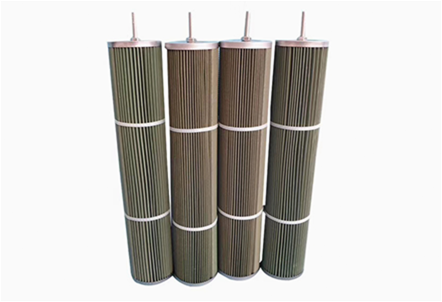 Tel:
+8615930870079
Tel:
+8615930870079
ธ.ค. . 11, 2024 10:56 Back to list
Choosing the Right HEPA Filters for Effective Air Purification and Cleanliness
Understanding HEPA Cartridges Essential Elements for Clean Air
In today's world, where air quality is a pressing concern, the importance of effective air filtration cannot be overstated. HEPA (High-Efficiency Particulate Air) cartridges have become a pivotal component in maintaining clean air environments, particularly in homes, offices, and healthcare settings. This article will explore what HEPA cartridges are, how they work, their benefits, and their applications.
What are HEPA Cartridges?
HEPA cartridges are filters that meet stringent performance standards set by the U.S. Department of Energy (DOE). To qualify as HEPA, a filter must trap at least 99.97% of airborne particles that are 0.3 microns in diameter. This includes a variety of contaminants such as dust, pollen, mold spores, pet dander, and even some bacteria and viruses. HEPA cartridges are typically made from a mat of randomly arranged fibers, often composed of fiberglass, which creates a dense mesh that captures particles as air passes through.
How Do HEPA Cartridges Work?
The effectiveness of HEPA cartridges lies in their unique design and the principle of filtration utilized. As air is drawn through the cartridge, particles encounter the fibers within the filter. There are several mechanisms at play
1. Interception Particles that follow the airstream can collide with the fibers and become trapped. 2. Impact Larger particles cannot easily navigate the tight spaces of the filter and impact the fibers directly. 3. Diffusion Smaller particles move erratically due to Brownian motion, increasing the likelihood of colliding with the fibers.
These combined mechanisms allow HEPA cartridges to maintain a high efficiency in removing particles from the air, making them invaluable in various settings
.Benefits of HEPA Cartridges
hepa cartridges

One of the primary advantages of HEPA cartridges is their ability to significantly improve indoor air quality. By removing harmful particles from the air, they can reduce allergens and irritants, thus benefiting individuals with respiratory conditions, allergies, or asthma. Additionally, HEPA filters contribute to overall health by filtering out contaminants that could lead to illness.
Another benefit is their effectiveness in diverse environments. In healthcare settings, HEPA cartridges help control infection by filtering out pathogens, contributing to a safer environment for patients and healthcare professionals. In industrial settings, they protect workers from inhaling hazardous substances, enhancing occupational health.
Moreover, the use of HEPA cartridges can lead to energy savings. When combined with properly designed HVAC systems, they can help maintain air quality without overworking fans and blowers, thus reducing energy consumption and associated costs.
Applications of HEPA Cartridges
HEPA cartridges are found in a wide array of applications. In residential settings, they are commonly used in air purifiers, vacuum cleaners, and HVAC systems to ensure clean indoor air. In commercial buildings, they are vital for maintaining a healthy environment for employees and customers alike.
In the healthcare industry, HEPA filters are essential in operating rooms, isolation rooms, and laboratory settings to control airborne contaminants and prevent infections. Furthermore, they play an important role in industries such as pharmaceuticals, food processing, and semiconductor manufacturing, where air quality is critical to product integrity.
Conclusion
As awareness of air quality issues continues to grow, HEPA cartridges stand out as a critical component in safeguarding public health. Their ability to filter out a vast majority of airborne particles makes them indispensable in a variety of environments. Whether you are looking to reduce allergens in your home, improve workplace safety, or maintain a sterile environment in healthcare, HEPA cartridges offer an effective solution to enhance air quality. Investing in HEPA filters is not just a choice; it is a step towards a healthier future for ourselves and the environment.
-
Nano Fiber Technology: Revolutionizing Cartridge Dust Collector FiltersNewsAug.06,2025
-
How Activated Carbon Air Cartridges Eliminate OdorsNewsAug.06,2025
-
Dust Filter Cartridge Handling Fine Particulate MatterNewsAug.06,2025
-
Cartridge Dust Collector Filter for Welding Fume ExtractionNewsAug.06,2025
-
Activated Carbon Filter Cartridge Effectiveness Against VOCsNewsAug.06,2025
-
Activated Carbon Air Filter Cartridge Benefits ExplainedNewsAug.06,2025

 Email:
Email:





